Vacuum flasks or thermo flasks have been around for over a century and remain relevant today thanks to their practical function of maintaining a drink’s temperature for extended periods of time.
Durable and versatile in equal measure, it’s no surprise that they’re still extremely saleable. In this article, we’ll help sellers understand the current market, the various types of vacuum flasks available, and key factors to consider before purchasing them for business.
Table of Contents
An overview of the vacuum flask market
Why vacuum flasks remain popular in 2024
Types of vacuum flasks available
What to consider when choosing which vacuum flasks to sell
Conclusion
An overview of the vacuum flask market
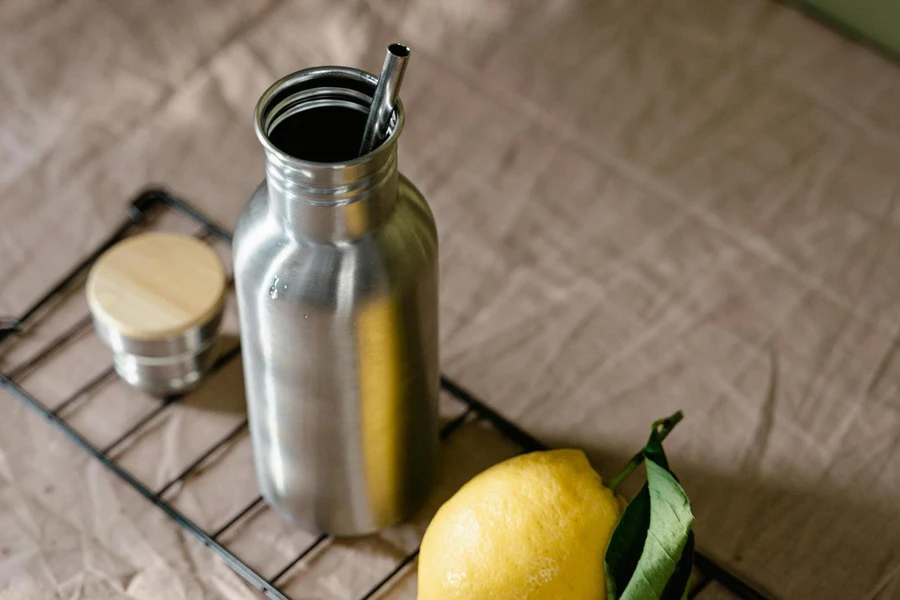
The vacuum flask market was worth USD 5.16 billion in 2023 and is expected to grow at a 4.9% CAGR to hit USD 7.36 billion by FY 2030. The vacuum flask market is still strong as people increasingly look for portable, easy-to-use solutions for keeping hot and cold drinks. Improvements in materials and design have also positively influenced market demand.
Why vacuum flasks remain popular in 2024
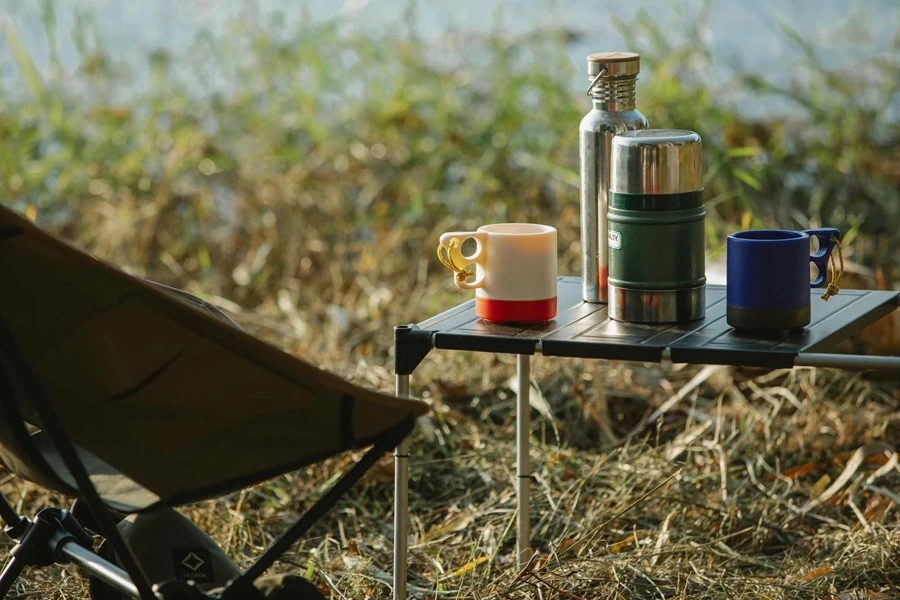
Vacuum flasks remain popular with consumers today for practical, lifestyle, and environment-related reasons. On the practical side, they are superb at mainataining the temperature of hot or cold drinks for extended periods. For this reason, many consumers still use them for long commutes, outdoor activities, or daily activities.
In regards to lifestyle, vacuum flasks are incredibly compact and portable, making them convenient for drinking beverages on the go. They are also a favorite for eco-friendly consumers who prefer using reusable containers.
So, how popular are vacuum flasks in 2024? Google data shows they attracted 60,500 searches in March 2024, proving they are still in high demand.
Types of vacuum flasks
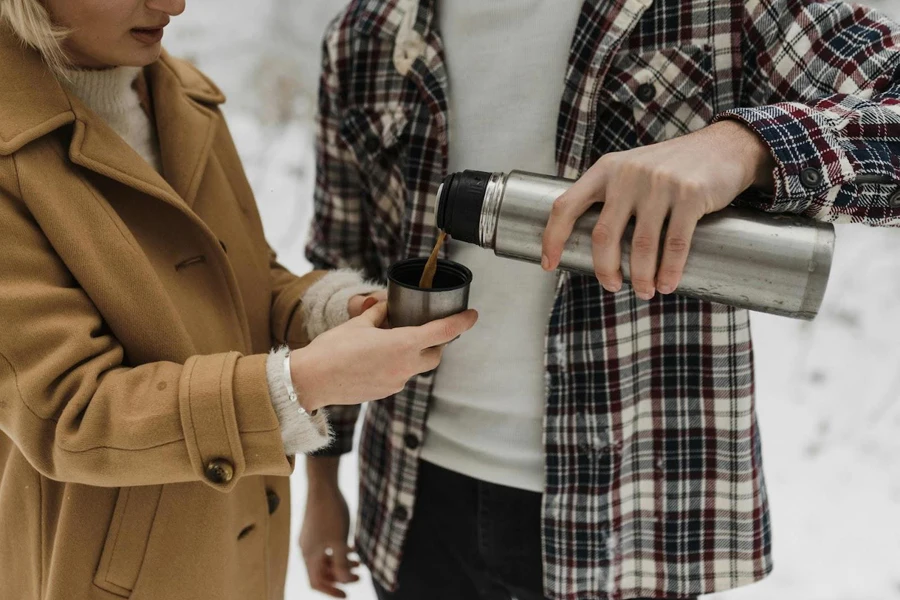
There are many different varieties of vacuum flask available today, each offering different benefits and purposes. Let’s take a brief look at four different types of flasks on the market:
Standard vacuum flasks

These traditional vacuum flasks feature double-walled, vacuum-sealed walls with screw-on lids. They are available in various sizes for different-sized beverages.
Travel mugs
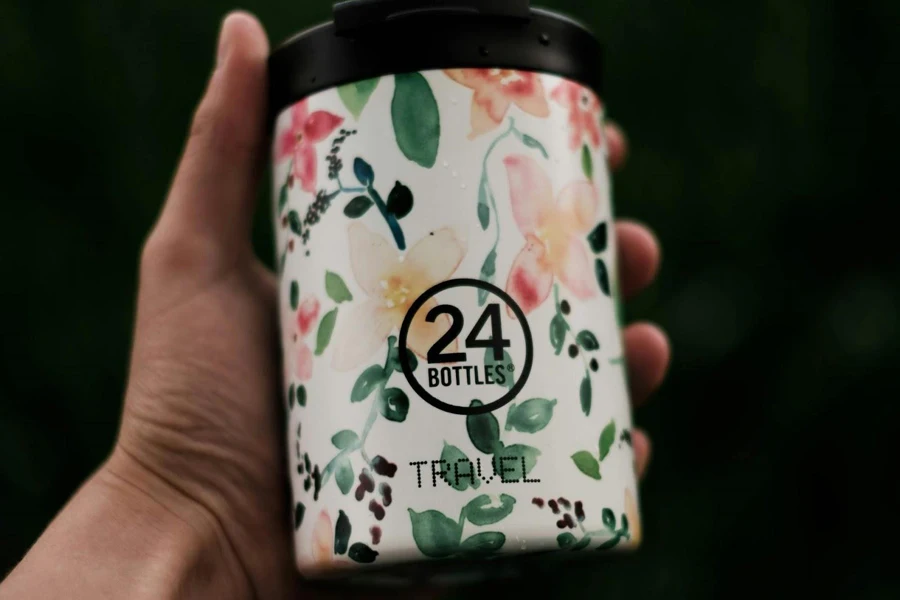
These are basically vacuum flasks in the shape of mugs, and are best suited for on-the-go use, with most models featuring spill-proof lids and handles for easy carrying. Travel mugs come in various shapes and sizes, with some offering extra features like built-in straws or flip-up lids.
Vacuum food jars

Beverages are not the only items that require temperature management – food does too. Vacuum food jars keep solid food items hot or cold for longer, easily storing soups, stews, chili, or other hot meals. They can also be used to keep salads, yogurt, or fruit fresh.
Smart flasks

Vacuum flasks have also gotten smart, with some models coming with built-in temperature displays, Bluetooth connectivity, or app integration, allowing users to monitor and control their beverage’s temperature from nearby or far away.
What to consider when choosing vacuum flasks to sell
Insulation
Vacuum flasks are all about insulation, so it’s essential to check if they have everything necessary to keep beverages hot or cold for extended periods. Without proper insulation, a flask’s contents will quickly reach the surrounding environment’s temperature, undermining their purpose.
Thankfully, determining if vacuum flasks have good insulation is pretty easy. First, sellers can check the materials manufacturers use to construct their vacuum flasks. High-quality vacuum flasks use materials like stainless steel or double-walled glass, which offer excellent insulating properties.
Sellers can check the thickness of the flask’s walls; thicker walls generally mean better insulation as they create stronger barriers to reduce any transfer of heat or cold. A flask’s lid is also important; well-insulated lids must fit tightly and securely, preventing any air from entering or escaping the flask.
Size and capacity
The size of a vacuum flask determines how much liquid it can hold. For example, purchasing larger-capacity flasks (for picnics, camping trips, or serving multiple people) will reduce the need for frequent refills. Conversely, smaller capacity flasks are more convenient for personal use or those with limited space. Check the table below for different vacuum flask sizes and capacities:
| Size description | Approximate capacity (fluid ounces) | Approximate capacity (metric) | Common uses |
| Personal flask | 10 to 18 oz | 300 to 550 ml | Individual coffee/tea and short hikes |
| Everyday carry | 20 to 34 oz | 600 to 1,000 ml | Work commutes, day trips, and sports |
| Large capacity | 36 to 64 oz | 1 to 2 liters | Picnics, camping, and group hydration |
| Extra large | 64+ oz | 2+ liters | Extended outings and serving multiple people |
Lid design
The lid design is extremely important for determining a vacuum flask’s usability. Different lids have specific functions and offer unique benefits. One of the most common lid designs is the screw-on lid, which is popular for its tight seal, preventing leaks and spills. For this reason, flasks with screw-on lids are the most suitable for travel and outdoor activities.
The push-button lid is another popular design. These lids are convenient for one-handed operation, as the user can easily open the flask with the push of a button. They also often feature locking mechanisms to prevent accidental spills. Finally, flip-top lids are one of the simplest to use, offering quick and easy access to beverages without needing to unscrew or press a button. These are more common for vacuum flasks designed for everyday use.
Materials
Stainless steel is the most popular material used to make vacuum flasks and is well-known for its durability, corrosion resistance, and ability to maintain temperature. Despite being metallic, stainless steel flasks are also relatively lightweight, making them convenient for travel and outdoor activities.
Double-walled glass is also used to make some amazing flasks, and is popular for its high aesthetic appeal and the ability to see the flask’s contents. Glass vacuum flasks are also non-reactive, meaning they won’t add any unwanted flavors or odors to the beverages. Nevertheless, glass flasks are typically more fragile than stainless steel variants and may not be as effective when retaining temperature for long periods.
Finally, plastic vacuum flasks are lightweight and less susceptible to denting or scratching than metal flasks. However, they offer lower insulation levels than stainless steel or glass variants and may retain some odors or flavors of drinks stored in them previously.
Aesthetic design
Vacuum flasks have transcended the boring and bland looks of when they first hit the market, allowing consumers to show off their personality and style with different aesthetic designs. For instance, consumers who prefer sleek and minimalist designs can choose vacuum flasks with clean lines, smooth surfaces, and simple colors.
If consumers want something louder, they can choose vibrant and colorful designs. These flasks come in bold and eye-catching colors, patterns, and prints, adding a fun and playful element. Bold and bright flasks are perfect for consumers to express their personality and add a pop of color.
Consumers can also go old-school with flasks that feature classic and timeless designs inspired by traditional thermos variants. Rounded shapes, matte finishes, and retro logos or branding help create that sense of nostalgia. Alternatively, flasks with metallic finishes, faux leather, wood trim, and intricate engravings are the go-to for more elegant and sophisticated designs.
Conclusion
Vacuum flasks may have been around for a long time, but they aren’t going out of vogue anytime soon. With the market booming and thousands of people searching for them, now is the perfect time for businesses to jump on the trend. By following the tips discussed in this guide, sellers can avoid sourcing dud products. Looking for more topics like this? Subscribe to Chovm.com Reads for all the latest home and garden trends.
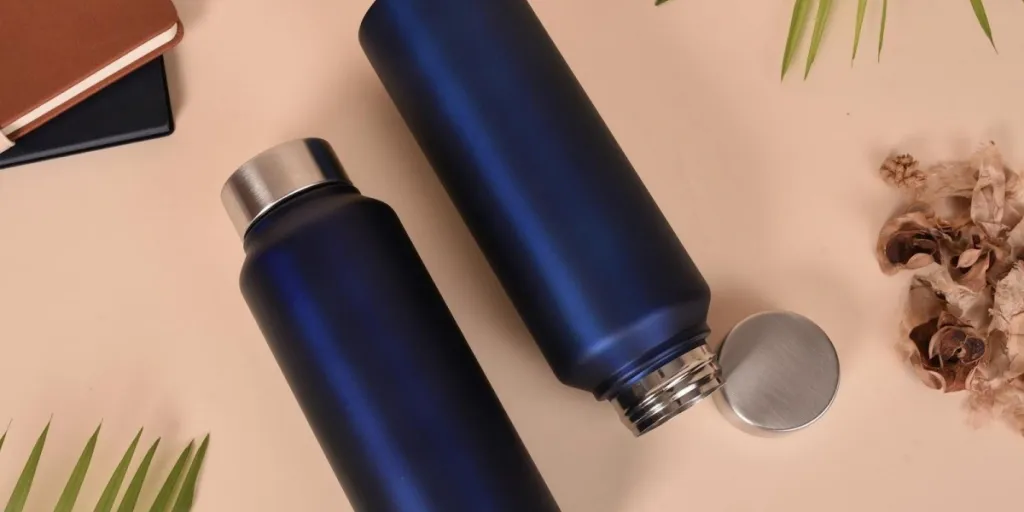




 বাংলা
বাংলা Nederlands
Nederlands English
English Français
Français Deutsch
Deutsch हिन्दी
हिन्दी Bahasa Indonesia
Bahasa Indonesia Italiano
Italiano 日本語
日本語 한국어
한국어 Bahasa Melayu
Bahasa Melayu മലയാളം
മലയാളം پښتو
پښتو فارسی
فارسی Polski
Polski Português
Português Русский
Русский Español
Español Kiswahili
Kiswahili ไทย
ไทย Türkçe
Türkçe اردو
اردو Tiếng Việt
Tiếng Việt isiXhosa
isiXhosa Zulu
Zulu